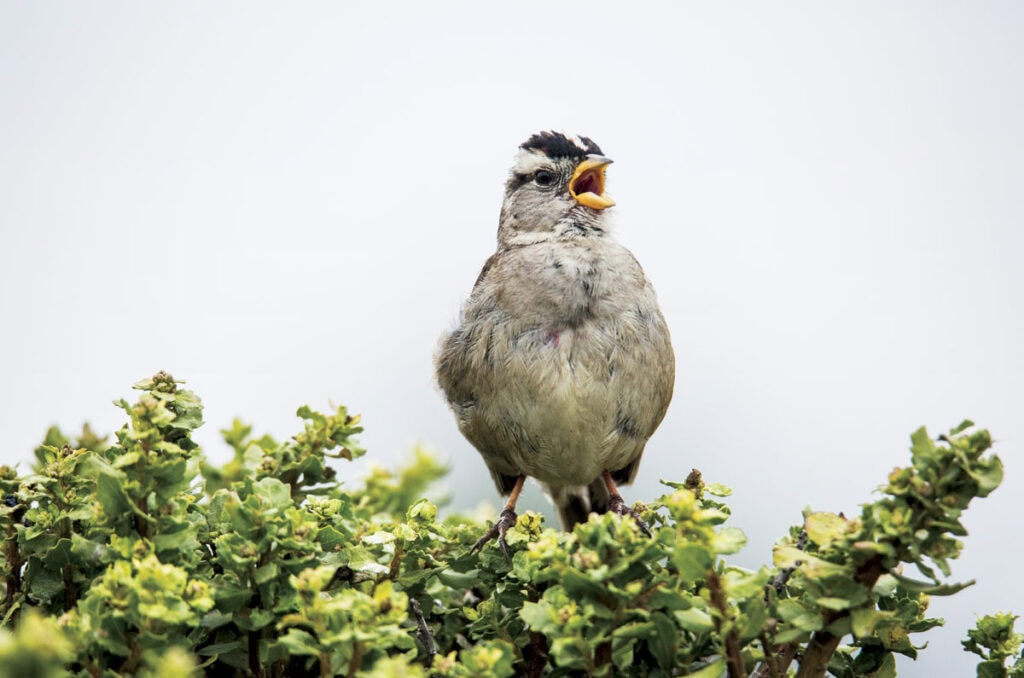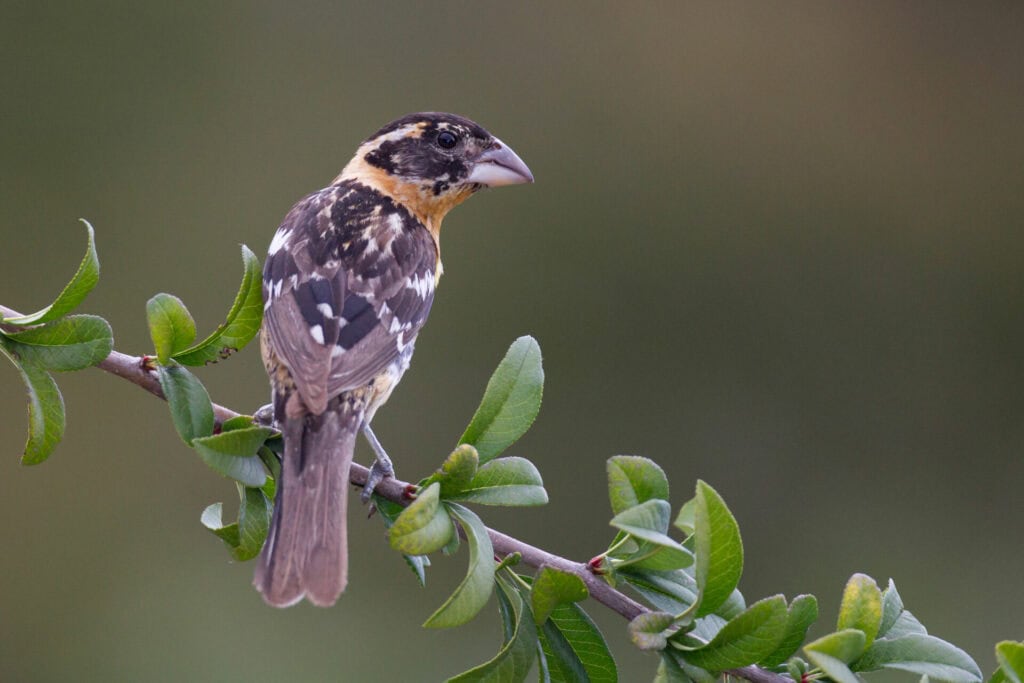Crowns of Gold and Black
by Rebecca Mills
They’ve gone.

With my morning tea, I open the back door and search. No Golden-crowned Sparrows. A California Towhee shuffles among the crusty leaves below the platform feeder. Several Dark-eyed Juncos tap at the ground or into the feeder openings for suet or peanuts, “wild bird mix” or thistle seed. No Golden-crowneds. Dave and I kept track for years. Now Dave is gone, and my daughter and I keep up the ritual. We expect them to leave sometime in mid-April and return in mid-September. Over the last few weeks we watched them eating rapaciously, as photoreceptors deep inside their brains reacted and triggered hormonal changes. Their stripes of crown feathers molted and regrew a rich bright yellow, framed in black. Most of them disappeared on April 21st. A few hung around the next day. None in sight two days later. Buen vuelo (have a good flight)!

They will fly north, some as far as Alaska, to breed and raise their chicks. Scientists know little about their migratory routes, breeding behavior, and nesting sites. We hope their stopover spots have survived the epic fires and floods of our times, that they find enough food and drink at their hostels, that their breeding is successful, their chicks robust and ready to fly back here in the shortening days of September. They comfort me in these times, coming and going, responding to an ancient call, braving the skies with no certainty they’ll find room and board in their traditional migratory habitats.
Other color-splashed avian visitors are here now. Brilliant orange, black, and white Black-headed Grosbeaks whose occasional sweet gentle call we love to hear. Elegant grey Band-tailed Pigeons with their white collars and tail-bands and their iridescent violet necks, who grunt and coo. Hairy woodpeckers with their red hats. And Bushtits, Juncos.
I’ve known juncos as long as I’ve known my sister—all my life. Proverbial “little brown birds”, they are everywhere. Their black heads—black hoods, black crowns, —their cinnamon-brown backs and lush-white breasts edged in pale peach, their tails flashing white stripes when they fly, their familiar “chp chp” calls populate my every day. They’re up before I am. They’re at all our different feeders and on the ground. They crack the seeds with their small, fat, pinkish sparrow beaks, spitting out the husks— in our backyard, on the front porch, in the Mahonia and Douglas Fir next to my daughter’s window feeding tray.
“It’s just a junco.” How often have we thought this, preferring the exciting view of an unusual or brilliantly decorated visitor—a Varied Thrush among the sparrows and jays! Just a junco? Not if it’s your first one. Recently on a Tilden Park trail a visitor from Taiwan asked the name of the spectacular black-headed bird she had spotted. Juncos, so common here, are not present in Taiwan.
They appear to thrive all over the United States and Canada, although fifty years of research show large numbers of them have disappeared. From most of the United States, they migrate north to Canada for breeding, but here in the San Francisco Bay Area they live year-round. Researchers have learned that juncos in Southern California have evolved rapidly to live there throughout the year, even to change their patterns of mating and raising chicks.
“It’s just a junco nest”? No, finding a junco nest is a special and rare experience. I’ve seen only a few. One in our neighbors’ backyard underneath a Cotoneaster shrub. One in the High Sierras in French Canyon, curled up in a patch of grass along the conifer forest trail. One in Nevada’s Great Basin National Park in a meadow not 20 yards from the Timber Creek trail, camouflaged underneath one of hundreds of small sagebrush plants. The day I found that one, juncos were frantically calling from a trail-side Pinyon Pine limb, trying to warn their chicks? Divert me?
Just a junco. Just a Scrub Jay. Just a Mallard. Reliable. Successful. Ordinary, but extraordinary. We enjoy watching you, scrappy little Dark-eyed Junco. We admire you.
We’ll look forward to the day the flashy Golden-crowned Sparrows return in the fall, hoping they do. They have come back late the last few years. We know the climate continues to warm, threatening us and our avian friends. We learned that Golden-crowned Sparrows return to the same wintering sites, like ours, so long as their flockmates do too. So, when they are late arriving, we fear too many have disappeared in the ongoing loss of this natural world. Please, we lament, not these birds with crowns of gold. These birds who lighten our days.
Rebecca Mills grew up watching and identifying birds. Now retired from the National Park Service, she lives in Berkeley and watches backyard avian visitors
